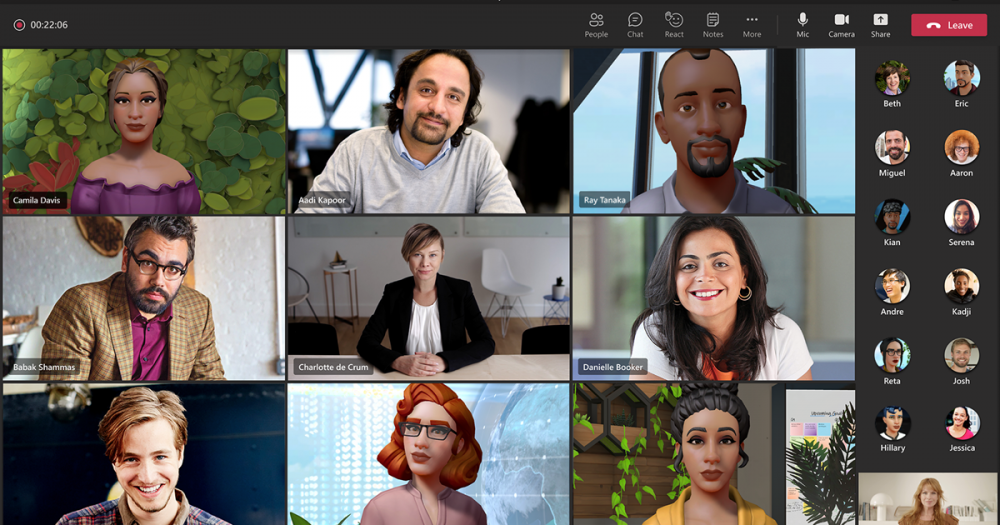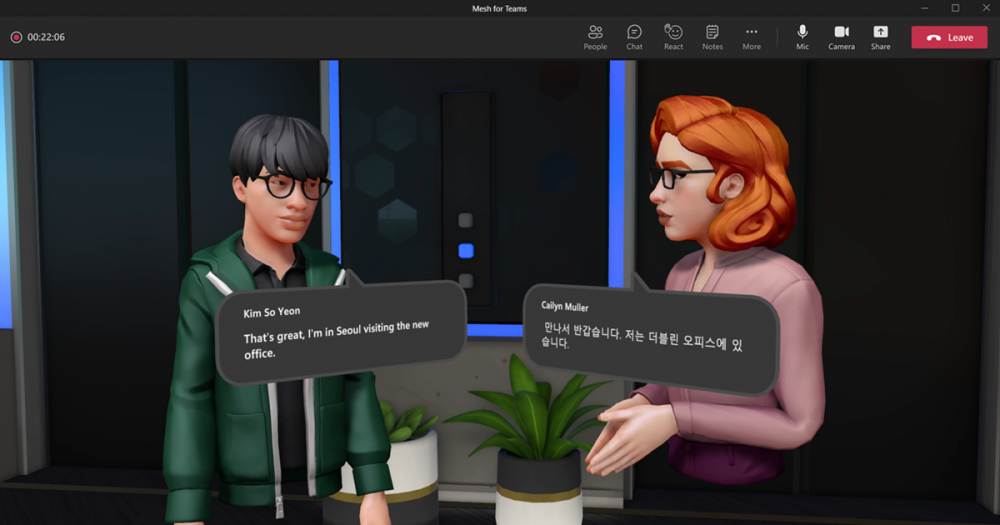Disruption is in full swing in the video conferencing market. Hopefully, incumbents such as Zoom were paying attention to Microsoft’s Ignite 2021 conference at the beginning of November. With all the metaverse hype in recent months, few people would have guessed that Microsoft Teams would be the gateway for many into the immersive virtual world.
As the world nears the second anniversary of the start of Covid 19 restrictions, workers have become accustomed to using Teams as their workplace collaboration tool. Whether it’s meetings, town halls, chat, co-editing documents or working off the same content calendar, Teams has become a popular tool during the pandemic. In fact, over the summer, Microsoft hit a milestone of 250 million active monthly users — back in March of 2020, the company was excited about the jump to 44 million daily users.
Next year, users will have access to Mesh for Teams, providing them the opportunity for distributed collaboration within the metaverse. Mesh for Teams combines the capabilities of the Microsoft Mesh platform with the productivity tools of Microsoft Teams, so users will be able to transform themselves into a personalized avatar to make meetings and whiteboarding sessions more personal and interactive.
“The ability to work from anywhere and connect with colleagues online is awesome, but remote meetings can feel impersonal and lack the small moments that build relationships and careers,” Microsoft said in a blog post about Mesh for Teams.
Despite the recent hype, however, the metaverse is not new. But now, Microsoft is making the metaverse more approachable for the general public by bringing it to the workplace. Microsoft said it will leverage artificial intelligence (AI) to animate avatars in Teams with lip movement, facial expressions and hand gestures. In 3D meetings, the animations can also include actions like raising the avatar’s hand when the user hits the raise hand option.
Appearing as an avatar “seems simple; it seems like just one step, but that’s the type of step I think people are ready to make,” Jared Spataro, the head of Teams, told the Financial Times.

Avatars speaking as part of a teams meeting will be only the first step of metaverse and virtual workspace collaboration.
Mesh for Teams will eventually go beyond simply appearing as avatars in meetings, though. Remote workers will be able to use their avatars to visit virtual workspaces, too, which Microsoft hopes become more common as employees continue to work remotely even as pandemic restrictions lift. Organizations can create immersive spaces that resemble conference rooms or lounges to enhance camaraderie, spark creativity and foster serendipitous connections, Microsoft says. Eventually, many companies will have virtual replicas of their entire corporate offices. Accenture, for example, has already built a virtual campus it uses for onboarding new employees. Microsoft is also building in translation and transcription support, so workers around the world can have meetings in virtual spaces with real-time translation.

Microsoft promises to deliver within its platform translation and transcription support, so virtual meetings held internationally will be able to have 1:1 translated conversations.
It may take a while for some people to adopt Mesh for Teams, and it may come across corny at times to see coworkers as an avatar, but I predict that over the next 3 to 5 years, 40% of Teams users will be leveraging various aspects of Microsoft Mesh and HoloLens usage will double. Microsoft is planting its metaverse flag with Teams, and I, for one, have my HoloLens ready to try it out! In fact, next year, Blueprint will be bringing our innovation lab into the metaverse for our clients to experience firsthand.
As the metaverse becomes more commonplace, Blueprint will continue experimenting with Microsoft’s entire metaverse technology stack, which companies should be widely implementing to remain relevant, improve user experience and increase their competitive advantage. Let’s have a conversation about how Blueprint can help you unlock the potential of the metaverse now and in the future.

